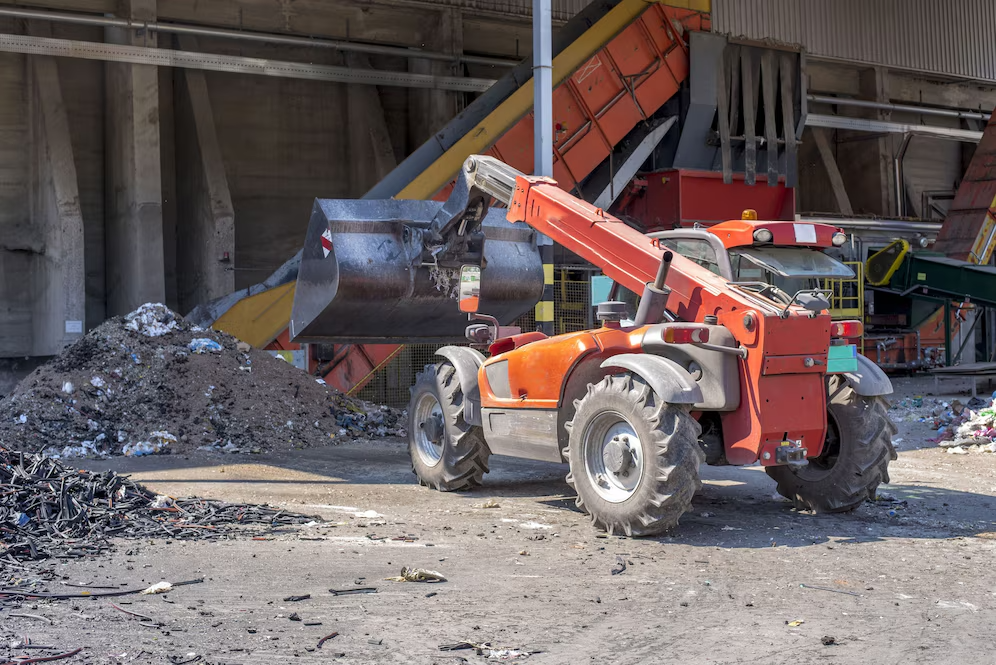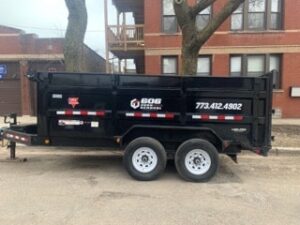
When managing construction debris, sorting the materials is the first step in ensuring proper disposal. This practice not only facilitates recycling but also reduces the amount of waste that ends up in landfills. Begin by dividing the waste into categories such as wood, metal, drywall, concrete, and hazardous materials like asbestos. By doing so, you can ensure that each type of material is disposed of in a manner that aligns with environmental regulations and safety standards.
Additionally, separating waste on-site can be a time-saver, as it prevents the need for additional sorting once the debris is collected. In many cases, construction companies and contractors find that setting up designated areas for each type of debris minimizes confusion and maximizes efficiency. Streamlining the waste management process in this way also helps avoid unnecessary delays in the construction schedule, allowing the project to stay on track.
Choosing the Right Dumpster for Construction Projects

Assess Project Scope
Before you choose a dumpster, take time to evaluate the scope of your construction project. Is it a minor home remodel, a kitchen renovation, or a full-scale demolition? The size of the project directly correlates to the amount of debris you’ll produce. Larger projects typically generate more waste and demand higher-capacity dumpsters to avoid the inconvenience of overflow and multiple pickups.
Know Dumpster Sizes
Understanding the standard dumpster sizes available can make your decision much easier. A 10-yard dumpster is ideal for small cleanouts or bathroom remodels, while a 20-yard is better for medium-sized projects. A 30- or 40-yard dumpster is usually reserved for large-scale construction. Knowing these options helps you match the dumpster size with your project’s specific debris volume.
Consider Material Weight
Not all debris is created equal. Materials like concrete, brick, and asphalt are extremely heavy and may exceed weight limits even if the dumpster isn’t full. In such cases, a smaller dumpster rated for heavy materials is often the safest choice. Overloading a larger dumpster with dense materials can result in additional fees or safety concerns during transport.
Avoid Under- or Over-Estimating
It’s tempting to guess and hope for the best, but estimating your needs too low can lead to the hassle of ordering additional dumpsters or arranging extra pickups. Overestimating, on the other hand, might mean you’re paying for space you never use. Taking accurate measurements or consulting with a professional helps strike the right balance and saves money in the long run.
Consult the Pros
When in doubt, don’t hesitate to reach out to a professional dumpster rental or junk removal company. Most reputable providers offer tools, guides, or even personal consultations to help you determine the most appropriate dumpster size for your specific job. Their expertise can prevent costly errors and ensure you have the right container from day one.
Safety Measures for Handling Hazardous Construction Debris
Safety is paramount when dealing with hazardous construction debris, which can include materials such as asbestos, lead paint, and certain types of insulation. These substances pose serious health risks and require careful handling to prevent exposure. Before beginning the debris removal process, contractors should conduct a thorough assessment to identify any hazardous materials on-site. If dangerous materials are found, it’s essential to follow OSHA guidelines and take appropriate precautions, including wearing protective gear and using specialized disposal methods.
Beyond safety gear, it’s vital to use professional removal services that are trained in handling hazardous debris. These services often employ specific protocols to ensure the safe transport and disposal of harmful materials, following environmental and regulatory standards. Failing to properly dispose of hazardous materials can lead to legal and health consequences, so it’s crucial to seek professional assistance when dealing with such debris.
Recycling Construction Debris for Sustainable Practices
Recycling construction debris not only supports environmental sustainability but can also reduce disposal costs. Many materials, such as wood, metal, concrete, and glass, can be recycled and reused in future construction projects. When recycling is implemented properly, it minimizes the amount of waste sent to landfills and reduces the need for new raw materials.
Moreover, construction companies that prioritize recycling are often eligible for tax credits or other incentives, depending on local regulations. This approach not only benefits the environment but also aligns with the growing demand for sustainable building practices. By integrating recycling into the construction process, companies can demonstrate their commitment to sustainability while reducing their carbon footprint. It’s a win-win for both the environment and the bottom line.
Timely Debris Removal to Keep Projects on Schedule
One of the most critical aspects of construction debris removal is ensuring that the waste is removed promptly to avoid project delays. Uncollected debris can accumulate quickly, blocking access to work areas and creating safety hazards for workers. Delays in debris removal can lead to increased costs and a longer project timeline. Scheduling regular pickups is key to keeping debris from piling up and disrupting the flow of work.
Working with a professional junk removal service that offers timely and flexible scheduling is essential to maintaining a smooth construction timeline. These companies typically have the experience and equipment to handle large-scale debris removal and can adapt to the specific needs of each project. Whether you need daily, weekly, or one-time pickups, professional services ensure that debris is removed on time, keeping the site organized and the project moving forward without unnecessary holdups.
Disposal of Electronic Waste on Construction Sites
Construction sites often generate electronic waste (e-waste) as old machinery, appliances, and equipment are discarded. Proper disposal of e-waste is critical because these items can contain hazardous substances such as lead, mercury, and cadmium. Many of these materials are harmful to both the environment and human health if not disposed of correctly. Contractors should work with junk removal services that specialize in e-waste disposal to ensure that all electronic items are handled safely.
In many areas, regulations require that e-waste be disposed of at certified recycling centers that can safely extract valuable materials like copper, gold, and aluminum. These materials can be reused in new electronics or other products, reducing the need for mining and conserving natural resources. Properly disposing of e-waste not only complies with local laws but also supports the broader goal of sustainability by reducing the environmental impact of construction projects.
Managing Large-Scale Construction Debris Removals
Large-scale construction projects generate vast amounts of debris, and managing it effectively can be a daunting task. When tackling massive cleanups, it’s essential to have a solid plan in place. This plan should involve identifying key waste streams, renting the appropriate dumpsters, and scheduling frequent pickups to keep the site organized. In addition to basic removal, consider working with a company that can offer sorting services or transport debris directly to recycling centers or appropriate disposal sites.
It’s important to also take into account the logistics of debris removal. For large projects, access to the site may be limited, requiring specialized equipment or vehicles for safe and efficient removal. Professional junk removal services that specialize in large-scale cleanups are well-equipped to handle these challenges, ensuring that debris is removed quickly and in compliance with local regulations. Having a team that can efficiently manage large volumes of debris is crucial for keeping the project on track and minimizing disruptions.
Cost-Effective Ways to Manage Construction Debris
Effective debris removal doesn’t have to come with a hefty price tag. By planning ahead and utilizing the right strategies, construction companies can manage their waste removal costs. One of the most cost-effective ways is by partnering with a junk removal service that offers transparent pricing and the ability to rent dumpsters of various sizes. Companies should also ensure that they are recycling as much of the debris as possible, as many recycling centers offer lower fees for recyclable materials.
Additionally, scheduling regular debris pickups can help prevent the accumulation of waste, which may otherwise result in higher disposal fees. By keeping the site organized and removing debris promptly, you’ll save time and money while also maintaining a safe working environment. It’s important to shop around and compare prices for dumpster rentals and junk removal services to find the best deal that suits your budget and needs. Efficiency and planning go hand in hand when it comes to minimizing costs.
Eco-Friendly Practices for Construction Debris Removal
In today’s world, being environmentally conscious is not just a choice but a necessity. Construction debris removal is no exception. Many construction companies are turning to eco-friendly practices that minimize their carbon footprint. This can include partnering with junk removal companies that prioritize green practices, such as recycling, reusing, and donating usable materials. In addition to being good for the environment, these practices can also improve a company’s reputation and appeal to eco-conscious clients.
Choosing a junk removal company that adheres to eco-friendly standards means that your waste is disposed of in a manner that helps conserve natural resources. By focusing on sustainable practices, you’ll contribute to a cleaner, healthier planet while simultaneously benefiting from a more efficient and responsible waste management process. Eco-friendly debris removal not only protects the environment but can also align with corporate sustainability goals and help reduce long-term costs.
Conclusion
For construction companies and contractors, adopting best practices for debris removal is key to ensuring that waste is managed in an environmentally responsible, efficient, and cost-effective manner. From sorting materials to working with professionals for timely pickups, there are numerous strategies that can streamline the debris removal process. Construction debris removal should always be approached with a plan, focusing on recycling, safety, and sustainability to achieve the best results.
606 Junk Removal and Dumpster Rental, located in Chicago, IL, offers reliable, timely debris removal and dumpster rental services. Their team is equipped to handle any construction waste project, ensuring that your construction site remains clean and organized. For expert junk removal services, contact 606 Junk Removal and Dumpster Rental at 773-412-4902 or via email at info@606junk.com.
